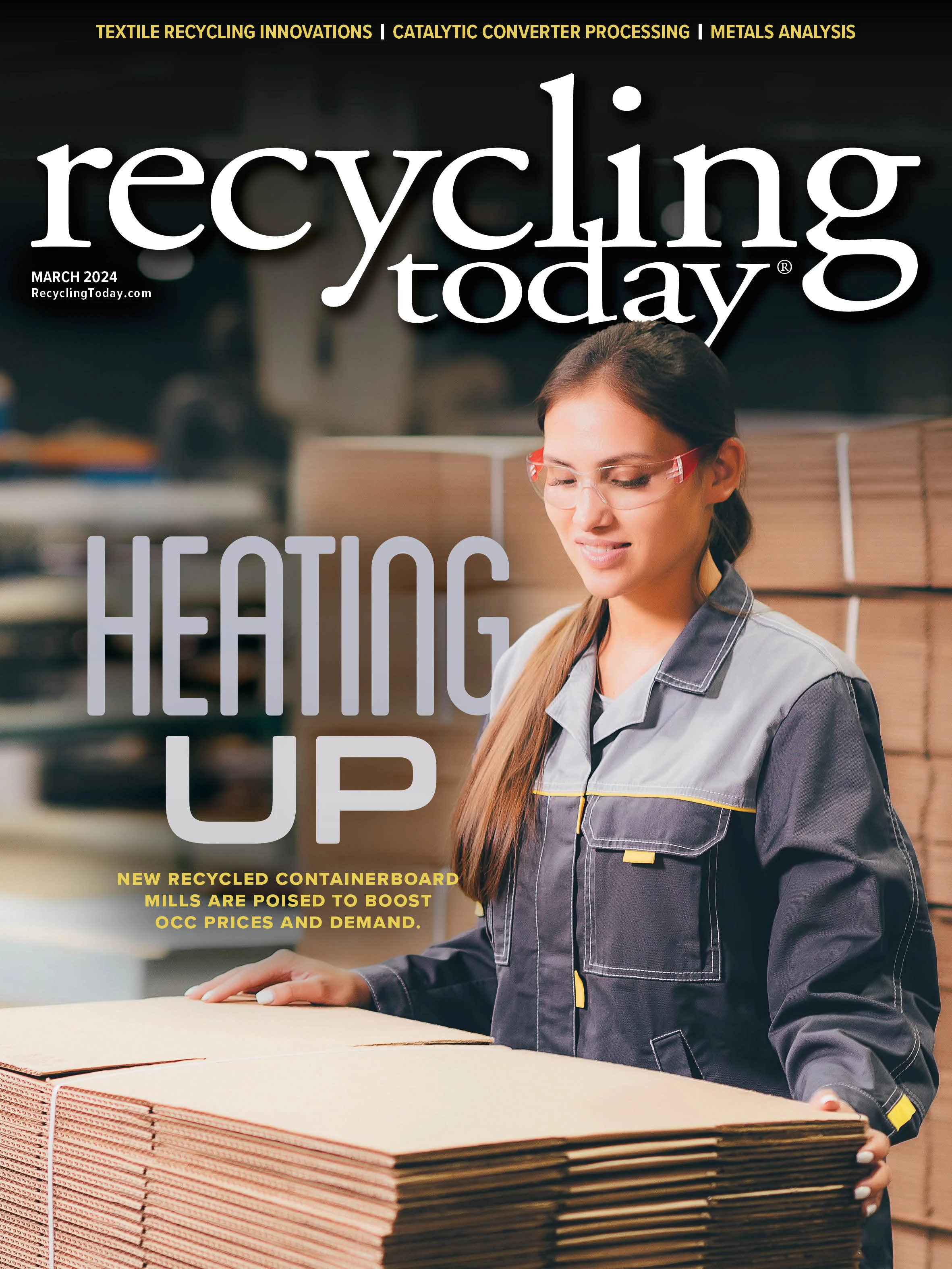“There is not a lot of scrap out there,” says Michael Diehl, a Los Angeles-based senior vice president at New York-based Coremet Trading Inc. Therefore, recyclers and traders of nonferrous scrap have to work harder to make ends meet.
He says that has been the trend for the last year, though scrap availability “still ebbs and flows,” with more scrap becoming available as pricing increases.
As of late February, however, the last four to six weeks have been quieter than is typical for this time of year, he says, adding that about 80 percent of the scrap yards he deals with say generation is slower across the board for nonferrous scrap.
“My theory is a lot of it has to do with people waiting to make capital investments predicated on interest rates. Hopefully, that starts to loosen up,” he says, as the Federal Reserve has indicated it will hold interest rates steady until early summer, when we could see the first of three rate cuts for the year.
“My theory is a lot of it has to do with people waiting to make capital investments predicated on interest rates.” – Michael Diehl of Coremet Trading says of limited scrap availability
Diehl describes U.S. and export demand as consistent to strong. “Demand remains static, and that is putting a squeeze on spreads,” he says. “The lack of scrap is really what is driving spreads.”
The turmoil in the Red Sea, where cargo ships are being attacked, has been affecting the movement of scrap, with Diehl saying it has slowed down certain trade lanes and increased rates quickly, though the effect has been smaller on U.S. shippers. “It is reshuffling where people buy from,” he says, adding it has made planning “precarious.”
He says red metal demand from China is strong, noting that while “nothing uglier” than birch/cliff, the combination of No. 2 copper wire and copper solids and tubing, is permitted to enter the country, that is starting to change because demand exceeds available supply. Over the last year, he says, more “friendly” ports have been allowing material to enter the country that does not meet the purity requirements established by the central government.

When it comes to London Metal Exchange (LME) pricing for copper, Marex writes in its “2024 LME Market Insights” report, released in late January, that it expects 2024 to bring range-bound pricing, with “perhaps a slight upward bias settling in during the second half of the year.” The London-based global financial services platform cites “sidelined” demand from China’s real estate sector, which is estimated to have accounted for 20 percent of global copper demand at its height, as a primary factor limiting the upside for pricing.
Diehl agrees that the LME price for copper should increase over the second half of the year. As of now, how-ever, “There is a good argument to be made that the bull cycle has not seen its time yet,” he says.
He does expect the LME copper price to be higher come Dec. 31. “In the long run, it has to come to some sort of shocking figure—really blow off the top—but this year is not that year,” he says.
Instead, he predicts a “controlled grind upward as we come to terms with interest rate environment.”

Explore the March 2024 Issue
Check out more from this issue and find your next story to read.
Latest from Recycling Today
- Phoenix Technologies closes Ohio rPET facility
- EPA selects 2 governments in Pennsylvania to receive recycling, waste grants
- NWRA Florida Chapter announces 2025 Legislative Champion Awards
- Goldman Sachs Research: Copper prices to decline in 2026
- Tomra opens London RVM showroom
- Ball Corp. makes European investment
- Harbor Logistics adds business development executive
- Emerald Packaging replaces more than 1M pounds of virgin plastic





